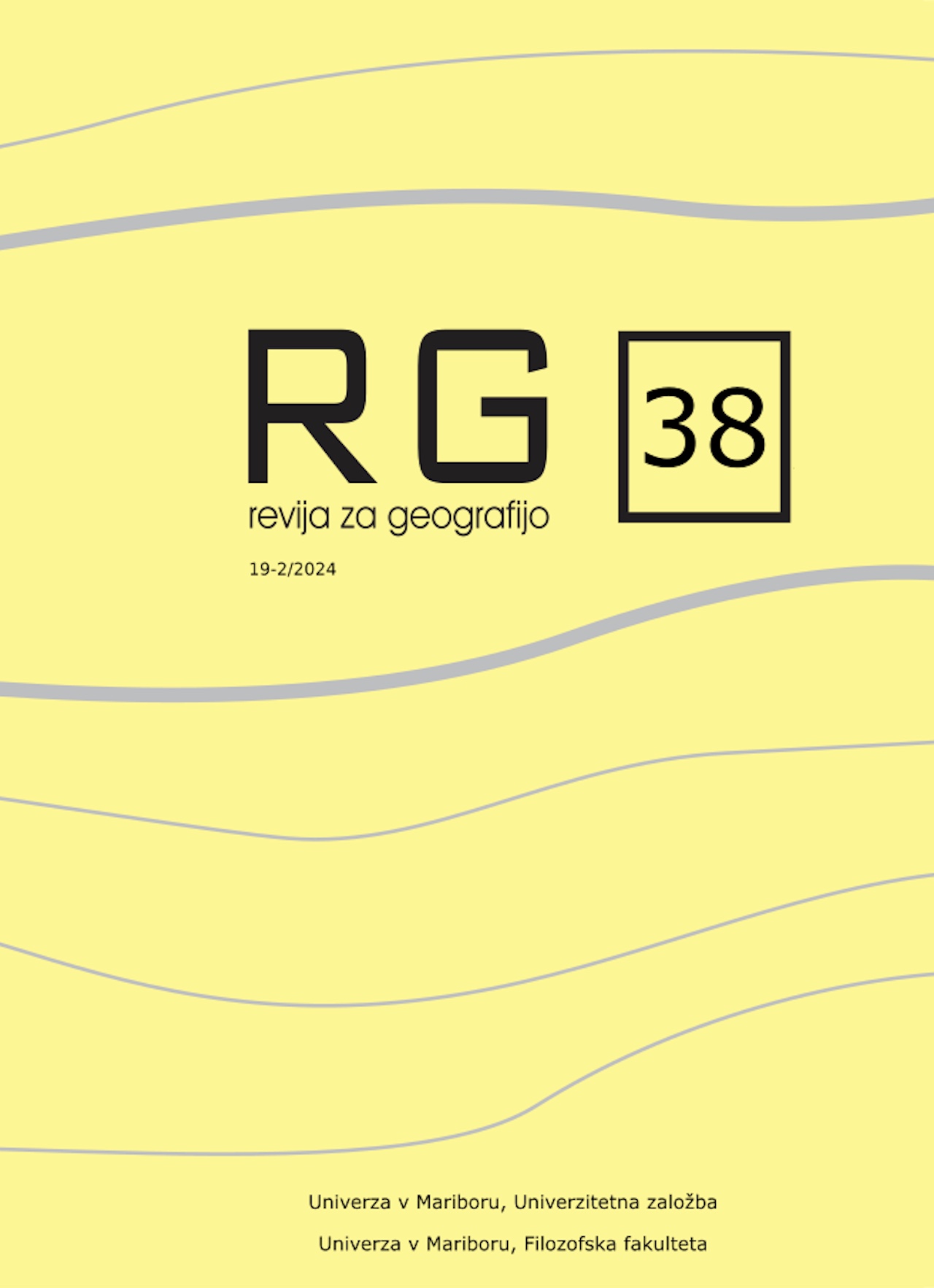Al-Biruni's Enduring Contributions to Cartographic Science
DOI:
https://doi.org/10.18690/rg.19.2.3746Keywords:
Al-Biruni, cartography, geography education, Islamic golden age, cross-cultural analysisAbstract
This paper commemorates the 1050th anniversary of Abu Rayhan Al-Biruni and delves into his unparalleled contributions to the geosciences and cartography within the context of the Islamic Golden Age. Al-Biruni's work, characterized by its interdisciplinary approach and meticulous methodology, has not only advanced the field of geography but also connected diverse cultural perspectives. By examining Al-Biruni's groundbreaking contributions, this study highlights his innovative methods for measuring the Earth's radius, his unique cartographic representations, and his synthesis of knowledge from various civilizations. Focusing on Al-Biruni's contributions from both a geographical and educational perspective, we illuminate his timeless impact on the discipline and provide insights that are of central importance to contemporary geography researchers and educators. This study underscores the importance of integrating Al-Biruni's interdisciplinary methods, critical thinking, and cross-cultural analyses into modern geographical education, thereby enriching the academic exploration of geography and fostering a deeper appreciation for the interconnectedness of global cultures and scientific advancements.
Downloads
References
Ahmed, A. S. (1984). Al-Beruni: The first anthropologist. RAIN, 60, 9–10.
Anawati, G. C. (1979). The Kitāb al-jamāhir fi ma‘rifat al-jawāhir of al-Bīrūnī. In H. M. Said (Ed.), Al-Bīrūnī commemorative volume (pp. 437-453). Karachi.
Berggren, J. L. (1985). The origins of al-Bīrūnī’s “method of the Zijes” in the theory of sundials. Centaurus, 28(1), 1-16.
Bressoud, D. M. (2010). Historical reflections on teaching trigonometry. The Mathematics Teacher, 104(2), 106-112.
Campanini, M. (2015). Science and epistemology in medieval Islam. Social Epistemology Review and Reply Collective, 4(12), 20-28.
Campbell, J. A. (1980). TW Freeman, Marguerita Oughton, and Philippe Pinchemel (Eds.), Geographers: Biobibliographical studies (Vol. 1). Journal of Historical Geography, 6(4), 421.
Colman, W. J. A. (2011). Measuring the radius of the Earth. Math. Gazette, 95, 532, 72–76.
Faid, M. S., Nahwandi, M. S., Nawawi, M. S. A. B. M., Zaki, N. B. A., & Saadon, M. H. M. (2022). Development of Qibla direction determinant using sun shadow. Online Journal of Research in Islamic Studies, 9(1), 89-102.
Gafurov, B. (1974). Al-Biruni, a universal genius who lived in the Central Asia a thousand of years ago. The Unesco Courier, 4-9.
Hammed, N. J. B., & Van Steenbergen, J. (2022). Al-Bīrūnī (973–c. 1050). In H. Klemettilä & J. V. Steenbergen (Eds.), Routledge Resources Online – Medieval Studies.
Kamaruzzaman, K. O. (2003). Al-Bīrūnī: Father of comparative religion. Intellectual Discourse, 11(2).
Kennedy, E. (1984). A bibliography of the works of Abul-Rayhan Al-Biruni by Ahmad Saeed Khan. Isis, 75, 611-611.
Kennedy, E. S. (1973). A commentary upon Biruni’s Kitab tahdid al-amakin; an 11th century treatise on mathematical geography. Beirut.
Martin, G. J. (2005). All possible worlds: A history of geographical ideas (4th ed., pp. 52-80). Oxford University Press.
Matchett, F. (2022). The Puraṇas. In G. Flood (Ed.), Wiley Blackwell companion to Hinduism, second edition (pp. 92-104). Wiley Online Library.
Mudztabai, F. (2011). Bīrūnī and India: The first attempt to understand. Filozofija I Društvo, 22(1), 53-86.
MyOldMaps.com. (2024). Early medieval monographs 400-1300: “Ahmad al-Biruni - Sketch map of the distribution of land and sea”, No.214.3. (Original work published 1985, last updated 22 March 2024). Retrieved from https://www.myoldmaps.com/early-medieval-monographs/2143-al-biruni-world-map/2143-al-biruni.pdf
Schwartz, R. K. (2010, May). Al-Qibla and the new spherical trigonometry: The examples of al-Bīrūnī and al-Marrākushī. In Makalah dipresentasikan di Tenth Maghrebian Colloquium pada History of Arabic Mathematics (COMHISMA10), Tunis, Tunisia.
Sparavigna, A. C. (2014). Al-Biruni and the mathematical geography. PHILICA, Article, (443).
The UNESCO Courier. (1974). Al-Biruni, a universal genius in Central Asia a thousand years ago: Astronomer, historian, botanist, pharmacologist, geologist, poet, philosopher, mathematician, geographer, humanist. The UNESCO Library, 4-41. Retrieved from https://unesdoc.unesco.org/ark:/48223/pf0000074875
Welburn, A. J. (2008). Chapter three: Syncretistic materials. In From a virgin womb (pp. 61-83). Brill.
Yano, M. (2007). Bīrūnī: Abū al-Rayḥān Muḥammad ibn Aḥmad al-Bīrūnī. In The biographical encyclopedia of astronomers (pp. 131-133). New York: Springer.
Downloads
Published
Issue
Section
License
Copyright (c) 2024 Young-Jin Ahn, Zuhriddin Juraev

This work is licensed under a Creative Commons Attribution 4.0 International License.
